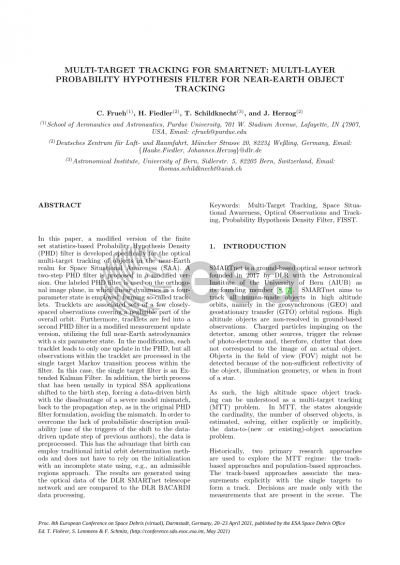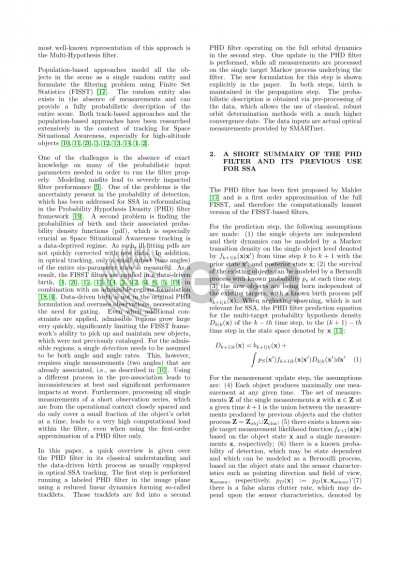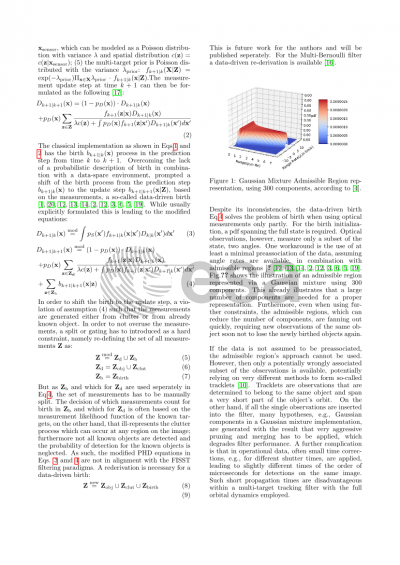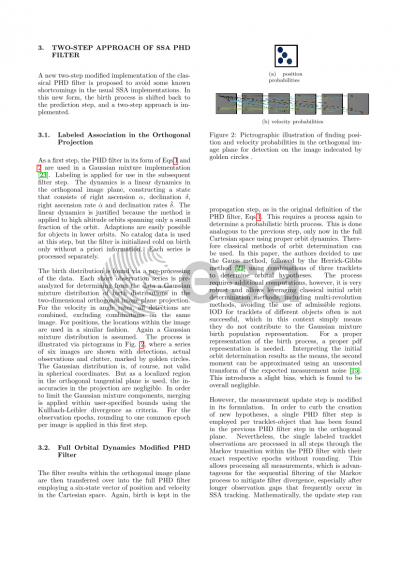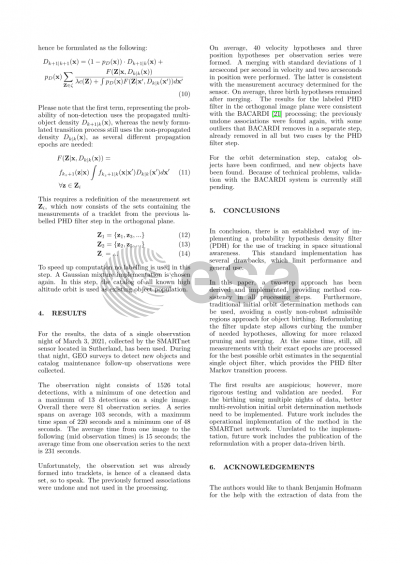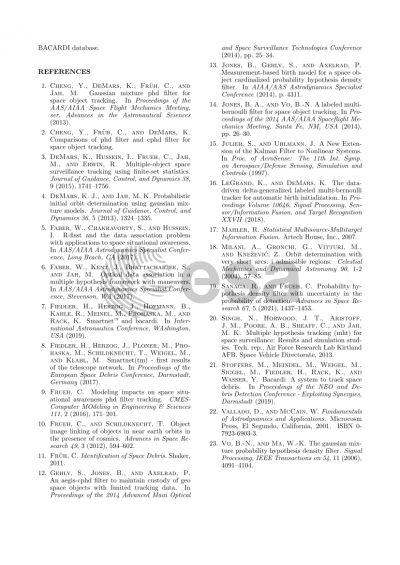Document details

Abstract
Space around the Earth is becoming more and more congested: There is increased commercial interest in near-Earth space, leading to increased launches. Simultaneously, sensing resources allow for the detection of smaller objects, leading to more detections. Observations are usually collected in short observation series, forming multiple detections and clutter per observation within a series. For operational reasons, such series are short relative to the orbital period of the observed objects.
Traditionally a chain of algorithms solving data association and clutter rejection are employed, feeding the data into a single-target tracking scheme in the final step. Each of the elements within the processing chain and the single-target tracking are usually independent components, and optimality cannot be guaranteed.
Alternatively, multi-target tracking methods do exist that, instead of posing a chain of algorithms, set out having a unified framework allowing for an overarching optimization. Prominent representatives are so-called track-based methods, such as Multi-Hypothesis Tracking filters (MHT) and most prominently, Joint Probabilistic Data Association (JPDA) filter. Alternatively, Finite Set Statistic (FISST) filters provide a solution based on a fully probabilistic description of the tracking problem.
In the probabilistic description, the scene is characterized by the probability density functions of the known objects with an associated detection and survival rate and their Markov transition process, new objects and their associated birth rate, and a sensing model with a clutter rate and distribution. All the rates can be time-varying. A full FISST implementation is computationally intractable even for a moderate number of objects. The Probability Hypothesis Density (PHD) is an elegant order approximation of FISST and is computationally lean first even for a larger number of objects.
The PHD filter has been successfully applied to tracking objects in the near-Earth realm before with mixed success. Compared to the traditional framework, significant adjustments are needed: It requires a birth process on a single observation. This is traditionally solved using an admissible region approach, shifting the start of the PHD-filter away from single observations to a pre-associated chain of observations (so-called tracklets), with the dire side effect of necessitating a pre-processing step for the first association, thwarting optimality. Secondly, birth has to be shifted to the data update step rather than the Markov transition step, leading to a minor model mismatch. The use of the admissible regions is subpar, as the regions, even with inclination, semi-major axis, and eccentricity constraints, are still extensive, leading to significant performance decreases in the operational use of the PHD filter. More severely, an integral part of the PHD filter is the knowledge of the probability of detection. A quantity traditionally not well known for space object tracking.
This paper shows that a significant model mismatch is causing substandard performance. An adapted new formulation is derived, leading to significantly improved performance in avoiding model mismatch on clutter distribution and the posteriori object distribution. Both are traditionally assumed to be Poisson distributed, but using observations shows that those distributions are ill-suited. Secondly, a model for incorporating uncertainty in the probability of detection has been developed, using a Gaussian Mixture approach, leading to significant improvements while only requiring five Gaussian components per object. Birthing with the admissible region is avoided in a multi-layer approach starting in the imaging plane with the single observations before transforming into Cartesian space's full state dynamics. Complete performance comparisons of all development steps are shown in both simulated and actual electro-optical measurement data. For the data, the observations of the SMARTnet™ are applied to the above methods.
Preview
